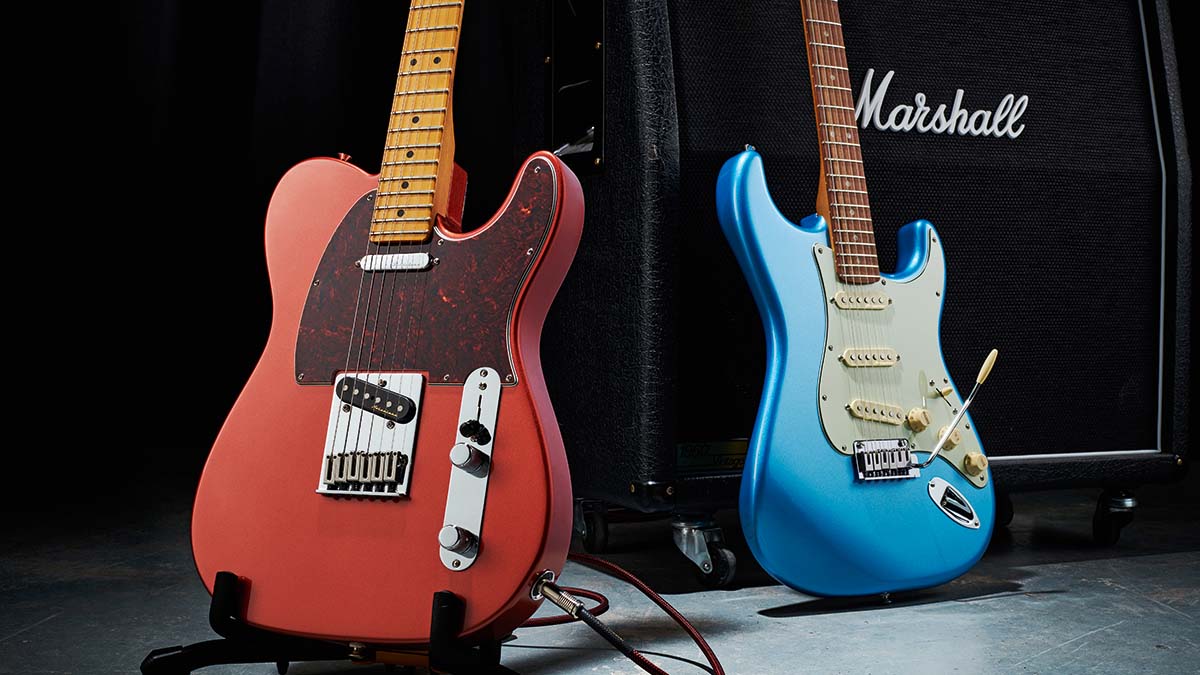Guitar World Verdict
Not for vintage cork-sniffers, but these guitars have mass appeal and we predict they’ll sell in container-loads: thought-through upgrades and worthy additions to an already huge-selling, improved platform.
Pros
- +
Smart build.
- +
Numerous improvements over the standard Player series...
- +
Not least the hum-cancelling pickups.
Cons
- -
The Strat's pau ferro fingerboard will look ‘wrong’ to some.
You can trust Guitar World
If you keep up with your Fender electric guitars then in recent years you’ll have become well accustomed to the seemingly quite short – typically four-year – life cycle before a series is refreshed and rejigged. It’s all a part of modern manufacturing.
And while some more cynical musos among us might see it as an excuse to raise prices, these new Player Plus models don’t lack in terms of new features. They are additions, not replacements, and they’re really quite modern in style, too: if you want a vintage-style Fender (perhaps to upgrade, as many of us do) then these might not be your fit.
Speaking of modernisms, there’s plenty of that going on with the new raft of finishes, but as we pull our review pair from their adequate – if hardly rugged – included gigbags, there is some welcome style here.
Our Stratocaster is a classy muted metallic blue named Opal Spark; our Telecaster’s more copper-coloured metallic is Aged Candy Apple Red. Both also come in a more traditional three-colour sunburst and, conversely, in some gradient-fade colours such as Tequila Sunrise and Silver Smoke. But it’s not just about some new finishes…
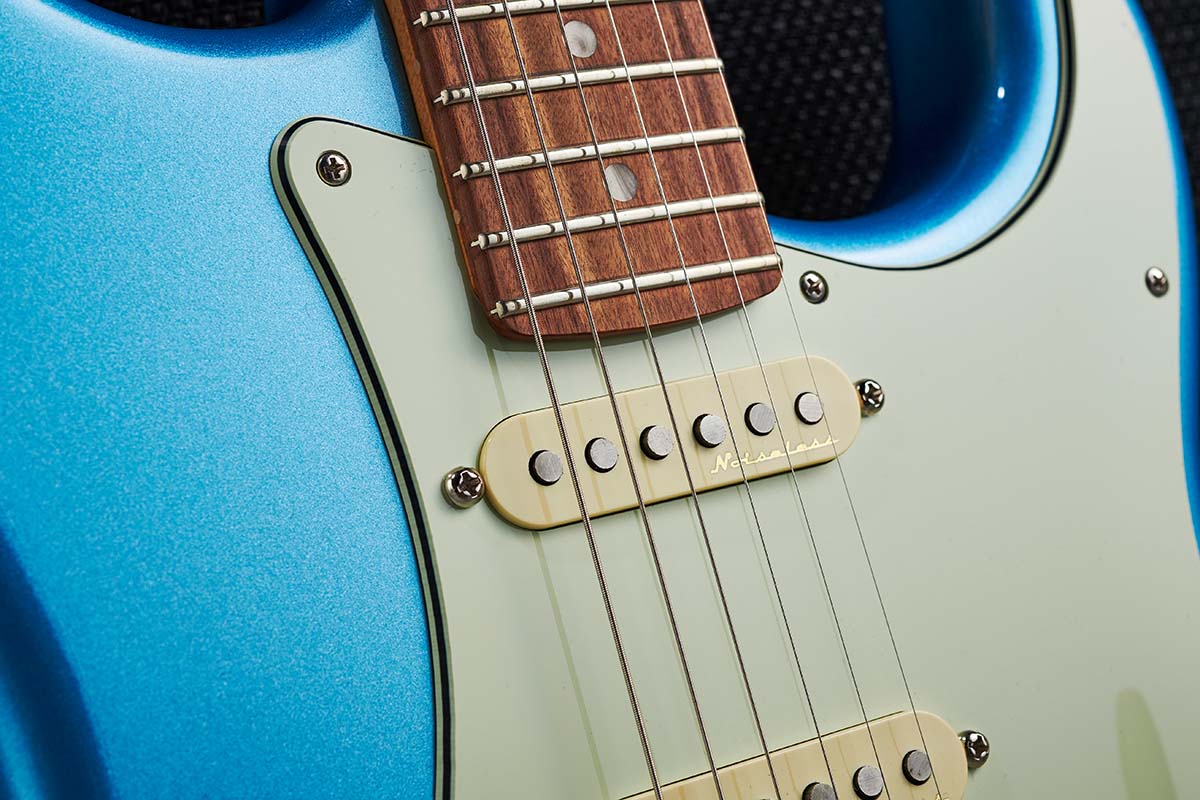
Fender’s softly, softly approach to innovation is certainly apparent here. Yet when you compare these with those hallowed blueprints from the '50s, you realise virtually everything – shapes aside – is different. So, we have alder bodies (we have no idea how many pieces are used for the body spreads as both our samples are opaque metallics), but aside from the finish quality the body contours are excellent.
The Strat’s big edge radius and well-curved forearm cutaway really reflect the ‘moulded’ appearance of those originals, only the rib-cage cutaway is slightly thicker on the bass-side edge. Flip the Telecaster over and you’ll see a rib-cage contour, too, which isn’t featured on the Player series model.
Unlike the contoured-edge body heels of the American Professional II and Ultra guitars, both heels here remain square-edged. The ‘F’ and ‘Player Plus’ logos on the neckplates tell us exactly what’s what and leave the vintage-y headstocks with those very classy dark ‘chrome’ metallic logos. There’s also a nice amber tint to the finish over the maple, which adds another touch of class.
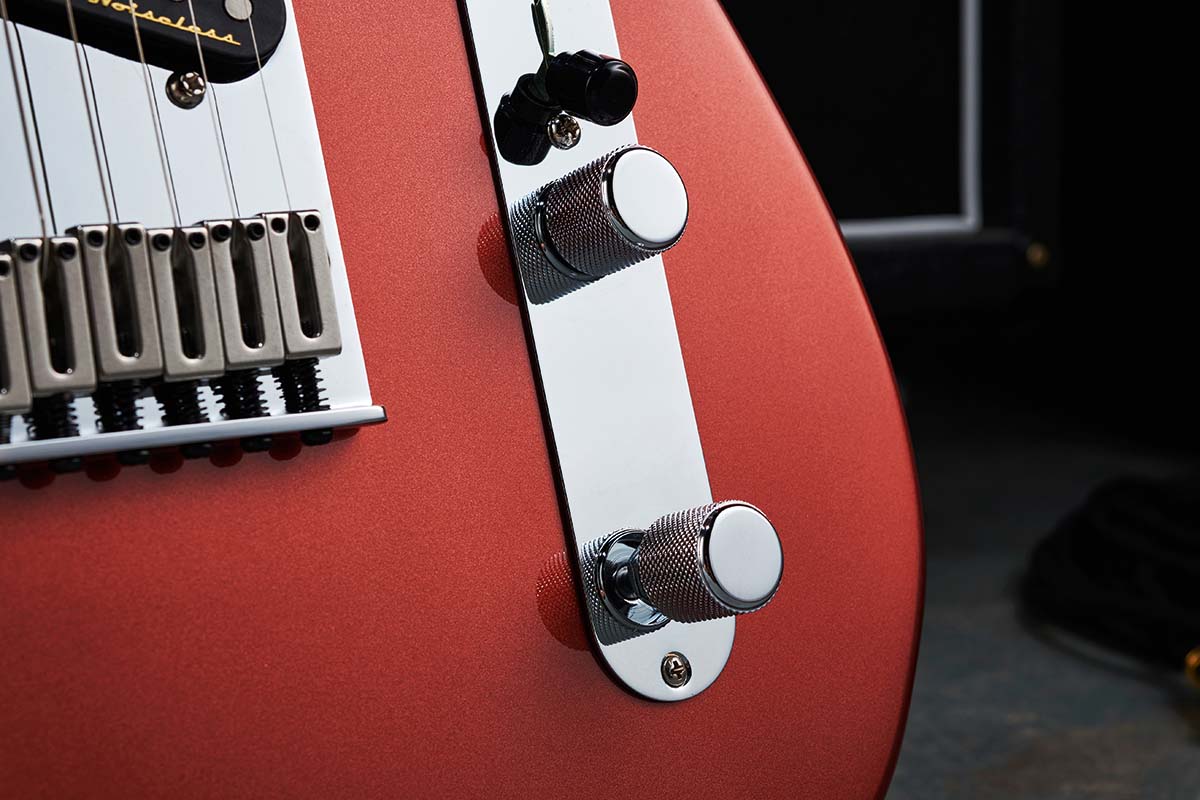
That said, our Strat’s pau ferro fingerboard is very light, almost caramel-coloured with just a brushstroke of darker striping by the nut on the treble side. We’re so accustomed to rosewood’s darker hue that many might just see this as ‘wrong’.
But the hardware on both is upgraded, primarily the tuners, which are now rear-locking. While the block saddle bridge on the Tele appears similar to the Player, block saddles replace the more vintage-style pressed steel saddles on the Strat’s two-post vibrato with its steel baseplate and die-cast deep-drilled block.
The saddles on both are spec’d as steel, but they aren’t magnetic – perhaps a sintered alloy that’s smooth and presumably rust-free?
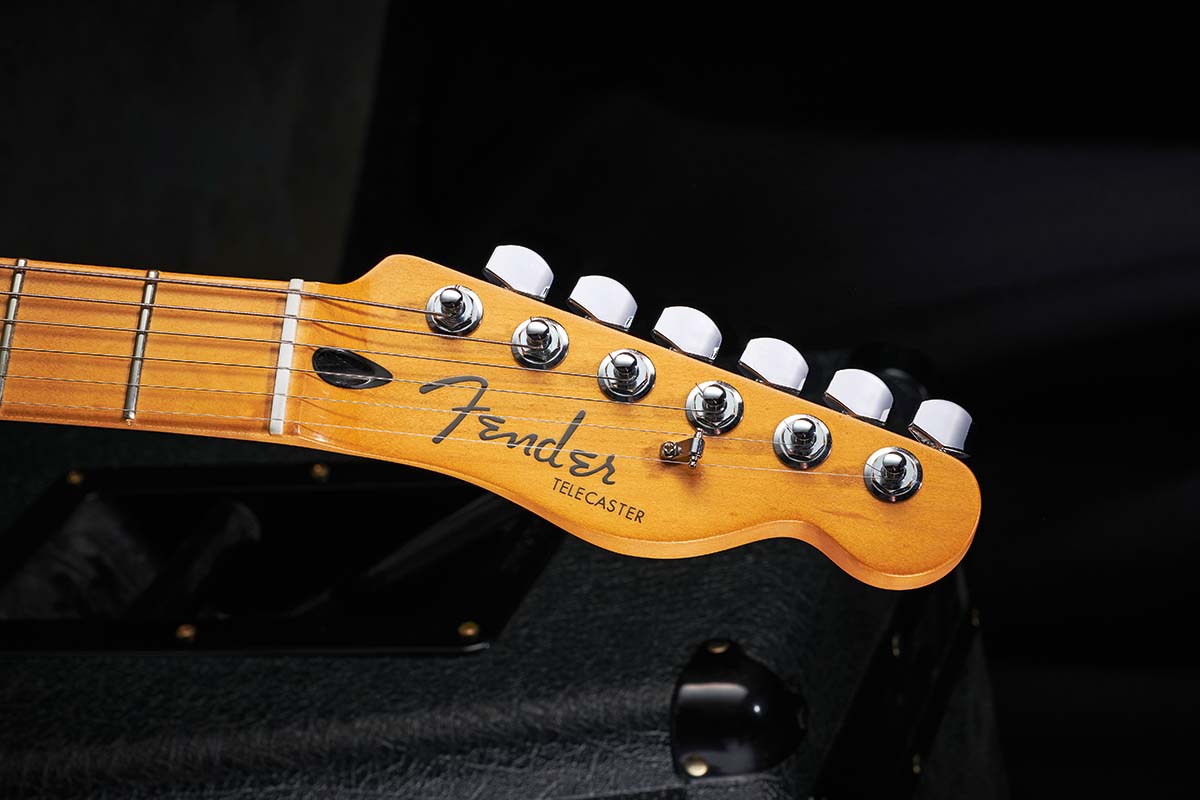
Our Tele comes with a four-ply tortoiseshell-like pickguard, and note that the neck pickup – unlike the original style – is suspended from the plastic, not screwed directly into the body, which makes any fine height adjustments dead easy. Our Strat’s slightly yellowed plastic parts, including a three-ply scratchplate, look nice and vintage-y, too.
The inclusion of hum-cancelling Noiseless pickups, not to mention a flatter 305mm (12-inch) fingerboard radius (the Players use a 241mm/9.5-inch radius), certainly reference the specs of Fender’s much more expensive American Ultra line. Meanwhile, the modded circuits, most recently seen on the American Pro II guitars, aren’t breaking any new ground but they do increase your sonic options.
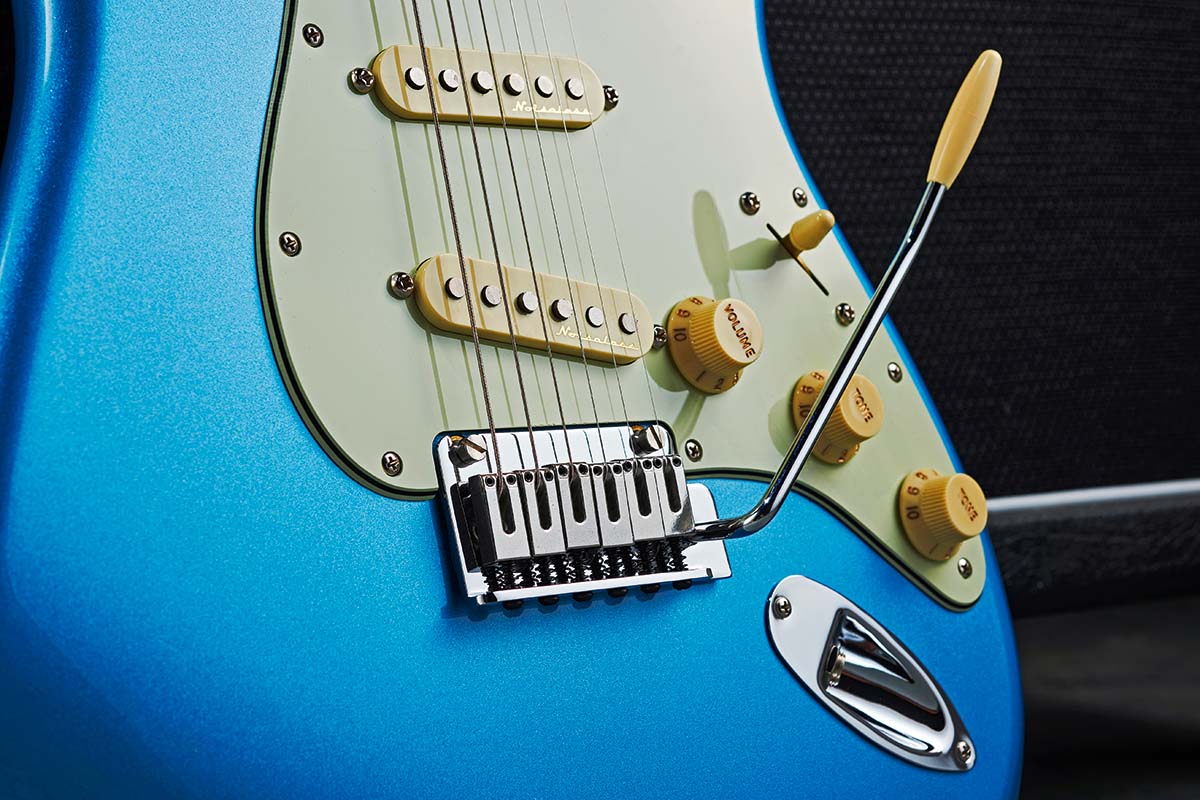
Feel & Sounds
A combination of relatively small details such as the increased nut width and flatter fingerboard radius push the Player Plus into a ‘modern’ bolt-on category on paper, but neither guitar here feels remotely like a shred machine.
The combination of well-rolled fingerboard edges (apparently a first for Fender’s Mexican-made guitars), a satin neck back and face, and wide ’n’ low fretwire (Fender-standard medium jumbo frets, measured at 2.6mm wide and just over 1mm high) simply make them great players. Both of our samples are very well set up with a low string height and near perfect nut work.
Our only criticism is that the setup really might be too low and slinky, enhanced by the standard 0.009-gauge strings and virtually no relief. But the dual-action truss rod with its headstock adjustment is easy to tweak, as are those block saddles.
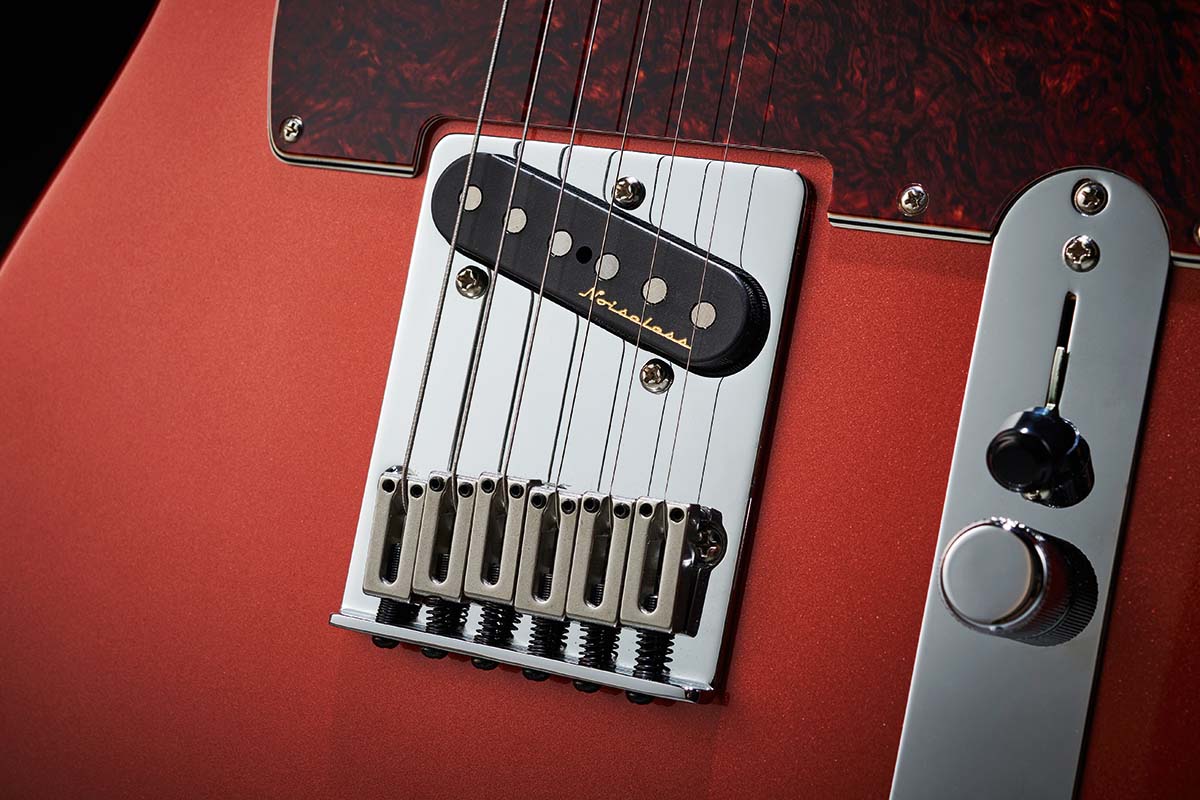
The nut width spec is increased, but only fractionally, from 42mm (1.650 inches) to 42.8mm (1.685 inches) in line with the Performer and USA American Pro II and Ultra, and the flatter radius is probably more noticeable to those used to the smaller vintage-style radius – less so if you own and use a variety of guitars, not least Gibsons.
Both our guitars actually measure the same 42.89mm at the nut and both have a pretty standard string spacing of 35mm. Both necks are on the slim side, depth-wise, too, classed as having a Modern ‘C’ Player Plus profile: 20.8mm at the 1st fret on our Strat and 22mm by the 12th.
The Tele is very slightly thicker, which may be that finish over the maple fingerboard, at 21mm and 22.2mm – very mainstream indeed and with a profile that certainly in lower positions has a hint of a ‘V’.
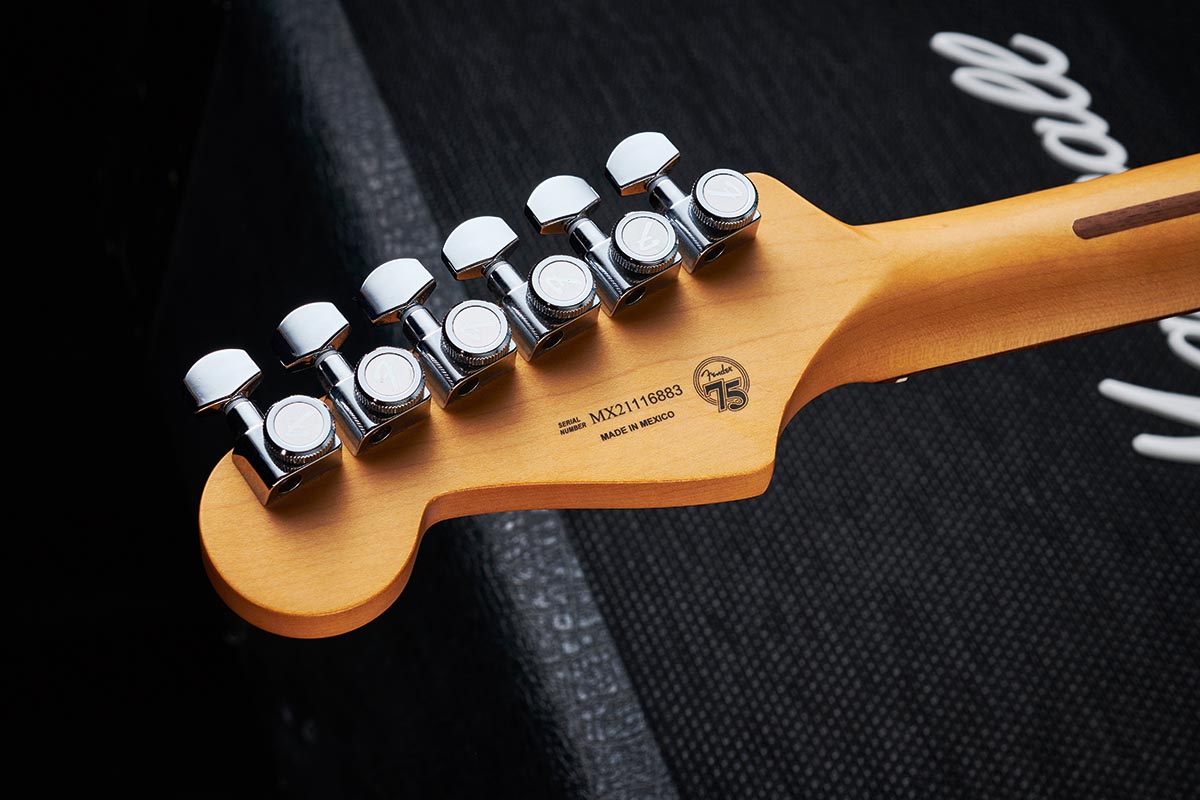
The first thing we notice when we plug in is the lack of hum pick-up. Now, we could start a long debate about single coils versus humbuckers and how the former are ‘correct’ and the latter never sound ‘right’. But we’re simply going to report what we hear.
As ever, new strings on a new guitar will sound a little brighter so it’s no surprise that we have bags of crisp clarity on our Strat with excellent bouncy, funky mixes and a pretty standard output – certainly not ‘hot’.
The extra bridge and neck, and all-three pickups together selections, add to the palette, and having a specific tone control for the bridge makes perfect sense here.
However, while those tone controls obviously pull back the highs, progressively darkening and softening what we hear, the master volume also plays a part in shaping your sound. For example, knock the control back from 10 to 9 and you really hear the high-end dip, almost like a no-load pot.
For pristine cleans, then, you’ll probably want that volume to be fully up, but using varying gains pulling back the volume a notch really helps ‘thicken’ what we hear. To be honest, aside from going up a string gauge and giving the setup a little more air, we’d take this on a gig no problem. A very enjoyable guitar.
It’s a little different with the Tele. Again, we have that abrupt treble roll-off on the volume control, and we’re surprised to find that the series link of both single coils happens in all three positions on the selector switch when you pull up the tone control’s switch.
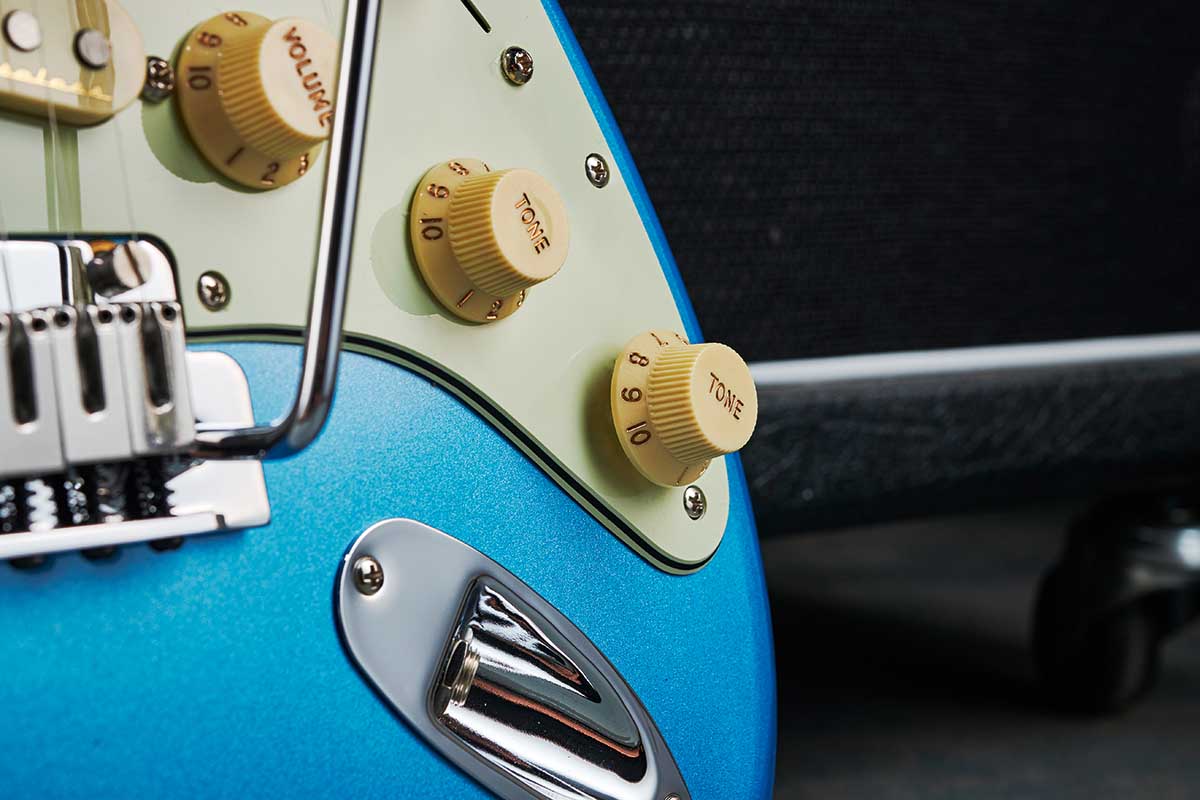
Typically, you’d wire that to be a series/parallel option with both pickups on as with the American Pro II Tele. That said, whatever pickup you’re on with the switch down you can immediately access the bigger series voice.
There’s little doubt that it gives this Tele a beefier tonality that laps up roots (and more) gain. But does it still sound like a Tele? Of course, if you’re veering on the more polite side until you pull that volume back and kick in a boost then there’s a low-output humbucker vibe here, for sure.
And the more we play and compare with other T-styles it comes across as less the sort of Tele you’d plug straight into a tweed amp and just go for it, and more one designed for a pretty basic pedalboard. Perhaps another indication of the intended player and a marked difference to the vintage-y Vinteras.
Verdict
Let’s face it, ‘modern’ and Fender isn’t always an easy mix. You might expect firms like Ibanez, Charvel or Suhr to modernise the classic platforms, but Fender? Except Fender has successfully done that with the American Pro II range and – more relevant here – the Ultra series. And the design brief of these Player Plus guitars is surely, how do we make an Ultra at under half the price in Mexico, isn’t it?
These are undoubtedly guitars that reflect how many people are playing today. Not everyone is chasing those vintage tones, man, let alone playing dirty blues in gin-soaked bars. And, frankly, you should be shot if you can’t make either of these sound like a Fender.
But the modernism isn’t that obvious – not least with colours of our review samples. Not for vintage cork-sniffers, then, but these guitars have mass appeal and we predict they’ll sell in container loads: thought-through upgrades and worthy additions to an already huge-selling, improved platform.
Specs
Fender Player Plus Telecaster
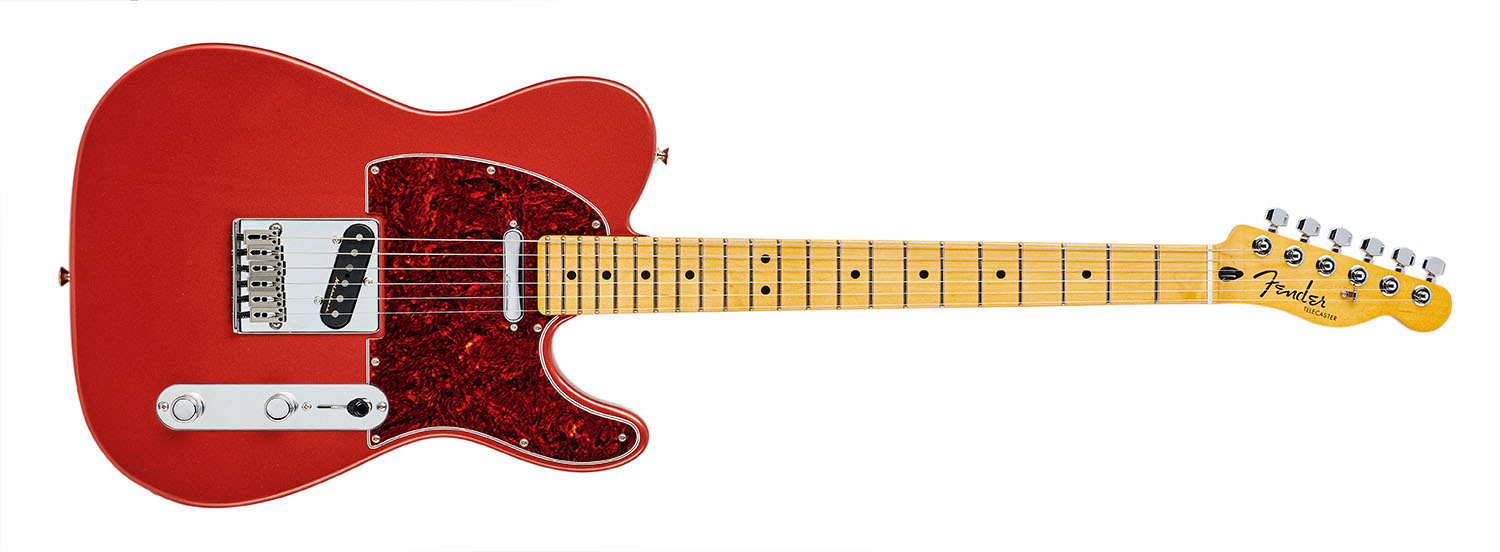
- PRICE: £939 (inc gigbag)
- ORIGIN: Mexico
- TYPE: Single-cutaway solidbody electric
- BODY: Alder
- NECK: Maple, Modern ‘C’ profile, bolt-on
- SCALE LENGTH: 648mm (25.5”)
- NUT/WIDTH: Synthetic bone/42.89mm
- FINGERBOARD: Maple, black dot markers, 305mm (12”) radius
- FRETS: 22, medium jumbo
- HARDWARE: Chrome-plated strings-through-body 6 block saddle bridge, ‘F’ logo rear lock tuners
- STRING SPACING, BRIDGE: 53mm
- ELECTRICS: 2x Fender Noiseless single coil-sized humbuckers, 3-position lever pickup selector switch, master volume and master tone (with pull-push switch for series link of pickups) with knurled knobs
- WEIGHT (kg/lb): 3.63/7.97
- OPTIONS: None
- RANGE OPTIONS: The other Tele, the Player Plus Telecaster Nashville (£979), adds a Strat-style Noiseless pickup in middle position. The Player Series Telecaster currently costs £679
- LEFT-HANDERS: Not currently
- FINISHES: Aged Candy Apple Red (as reviewed), 3-Colour Sunburst, Cosmic Jade and Silver Smoke
Specs
Fender Player Plus Stratocaster
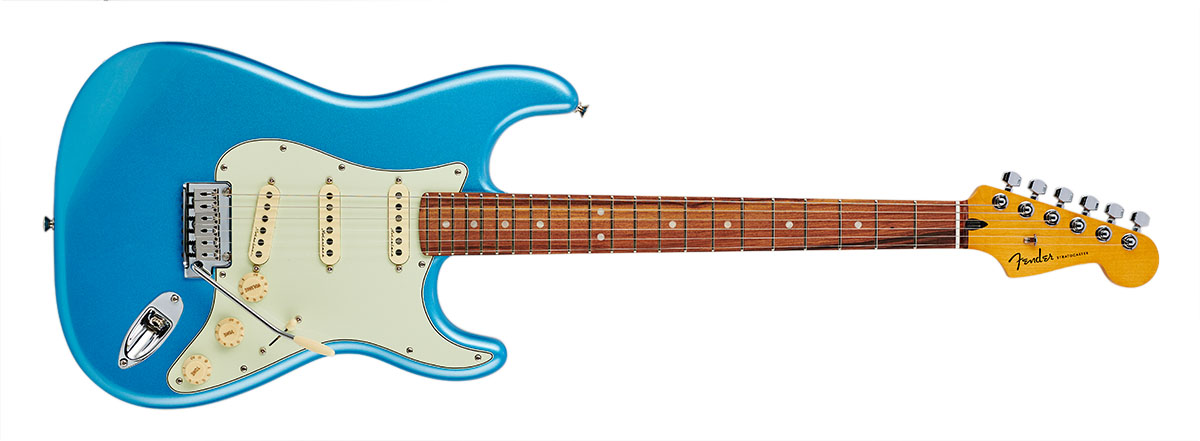
- PRICE: £939 (inc gigbag)
- ORIGIN: Mexico
- TYPE: Double-cutaway solidbody electric
- BODY: Alder
- NECK: Maple, Modern ‘C’ profile, bolt-on
- SCALE LENGTH: 648mm (25.5”)
- NUT/WIDTH: Synthetic bone/42.89mm
- FINGERBOARD: Pau ferro, pearloid dot markers, 305mm (12”) radius
- FRETS: 22, medium jumbo
- HARDWARE: Nickel/chrome-plated 2-point vibrato (with steel baseplate and die-cast block) and steel block saddles, ‘F’ logo rear lock tuners
- STRING SPACING, BRIDGE: 52.5mm
- ELECTRICS: 3x Fender Noiseless single-coil sized humbuckers, 5-position lever pickup selector switch, master volume, tone 1 (neck and middle), tone 2 (bridge) w/ pull-push which adds the neck pickup to position 1 bridge and 2 bridge and middle
- WEIGHT (kg/lb): 3.8/8.36
- OPTIONS: None
- RANGE OPTIONS: The Player Plus Stratocaster HSS (£979) adds a Wide Range-style covered full-size humbucker at bridge. The Player Stratocaster currently costs £679
- LEFT-HANDERS: Not currently
- FINISHES: Opal Spark (as reviewed), 3-Colour Sunburst, Olympic Pearl, Aged Candy Apple Red and Tequila Sunrise

Dave Burrluck is one of the world’s most experienced guitar journalists, who started writing back in the '80s for International Musician and Recording World, co-founded The Guitar Magazine and has been the Gear Reviews Editor of Guitarist magazine for the past two decades. Along the way, Dave has been the sole author of The PRS Guitar Book and The Player's Guide to Guitar Maintenance as well as contributing to numerous other books on the electric guitar. Dave is an active gigging and recording musician and still finds time to make, repair and mod guitars, not least for Guitarist’s The Mod Squad.
“It holds its own purely as a playable guitar. It’s really cool for the traveling musician – you can bring it on a flight and it fits beneath the seat”: Why Steve Stevens put his name to a foldable guitar
“Finely tuned instruments with effortless playability and one of the best vibratos there is”: PRS Standard 24 Satin and S2 Standard 24 Satin review
